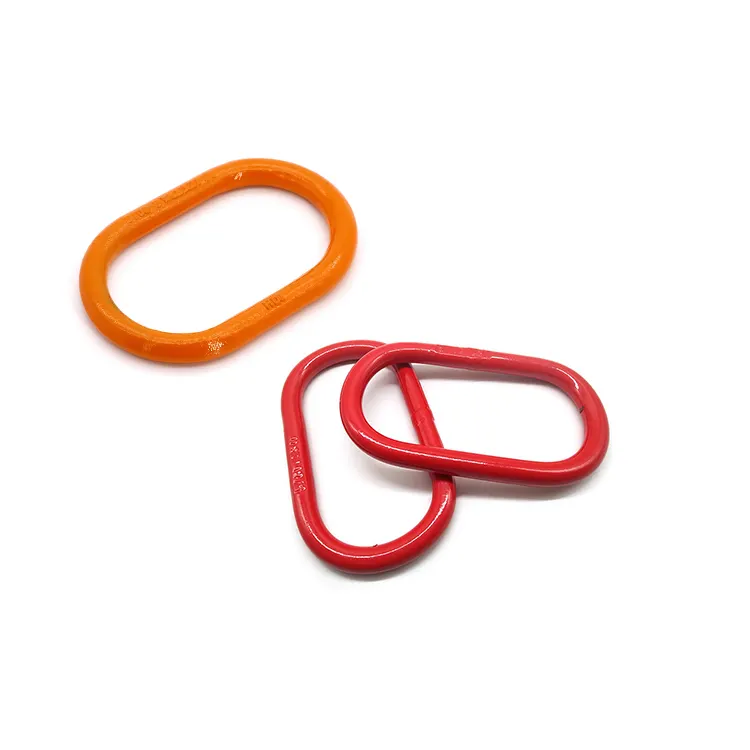News
اکتبر . 10, 2024 08:00 Back to list
bow shackles factory
Understanding Bow Shackles The Essential Components from the Factory
In the realm of heavy lifting and rigging, bow shackles play a pivotal role as critical components that ensure safety and efficiency. Manufactured in specialized bow shackle factories, these robust hardware items are designed to withstand immense loads while allowing for flexible connections between various rigging elements. This article delves into the characteristics, manufacturing process, and applications of bow shackles, underscoring their significance in various industries.
What is a Bow Shackle?
Bow shackles are U-shaped metal connectors whose ends are secured with a pin or bolt. Unlike straight shackles, bow shackles have a more rounded design that allows for multiple connection points. This unique shape provides a greater working load limit and improves load distribution, making them an excellent choice for applications requiring high strength and versatility. Standard materials used in their construction include alloy steel, stainless steel, and galvanized steel, which enhance their durability and resistance to corrosion.
The Manufacturing Process
Bow shackle manufacturing begins with sourcing high-quality raw materials. Factories ensure that the steel used meets rigorous industry standards, which is crucial for the performance capabilities of the final product. The production process typically involves several key steps
1. Material Preparation Raw steel is processed to the required dimensions. This might involve cutting the metal into appropriate lengths and widths, depending on the design specifications.
2. Forging The cut steel is then heated and forged into shape. Forging involves shaping the hot metal under pressure to create the U-formation characteristic of bow shackles. This process not only gives the shackle its form but also improves the integrity and strength of the metal through alignment of the grain structure.
3. Machining Once forged, the shackles undergo machining to refine their shapes, ensuring precision in the fit of pins or bolts. This step is critical, as the effectiveness of the shackle relies heavily on how well the components fit together.
bow shackles factory

4. Surface Treatment After machining, the shackles are treated to enhance corrosion resistance. Common treatments include hot-dip galvanizing, powder coating, or passivation for stainless steel options. Each treatment is selected based on the intended application and environmental conditions the shackles will be exposed to.
5. Quality Control Before reaching the market, bow shackles undergo rigorous quality testing. Factories check for compliance with standards like ASTM or ISO, ensuring that each product can withstand its specified load. This step is vital for guaranteeing safety in heavy lifting applications.
6. Packaging and Distribution Finally, once the shackles pass quality assurance, they are packaged for distribution. Factories often provide thorough documentation about the specifications and load capacities, which is essential for users to understand the limits of the product.
Applications of Bow Shackles
Bow shackles are versatile and find applications across various industries. They are commonly used in
- Construction For lifting heavy materials and equipment. - Maritime Used in rigging, securing boats, and anchoring. - Oil and Gas Connecting hoses and pipes in drilling operations. - Mining In lifting operations and machinery. - Telecommunications For supporting heavy communication towers and antennas.
In each of these applications, the load capacity and safety features of bow shackles are paramount. They provide a reliable connection between components, ensuring that weight is evenly distributed and minimizing the risk of failure.
Conclusion
The bow shackle is an indispensable tool in the heavy lifting and rigging industry. Manufactured with care and precision in specialized factories, these shackles are designed to meet the stringent demands of various applications. Understanding their manufacturing process and practical usages highlights the importance of quality and safety in selecting the right rigging components. As industries continue to evolve and demand higher standards of performance, bow shackles will undoubtedly remain a cornerstone of secure and efficient lifting solutions.
